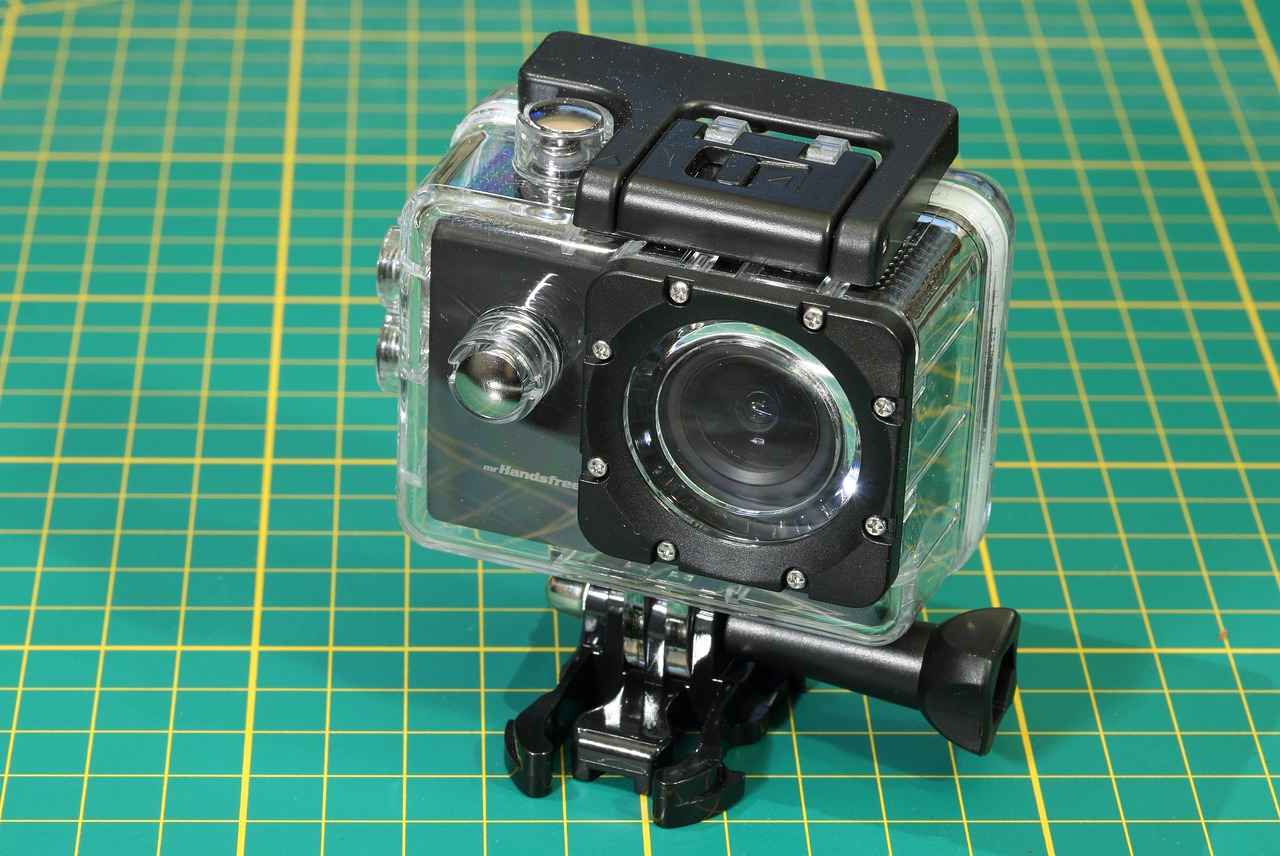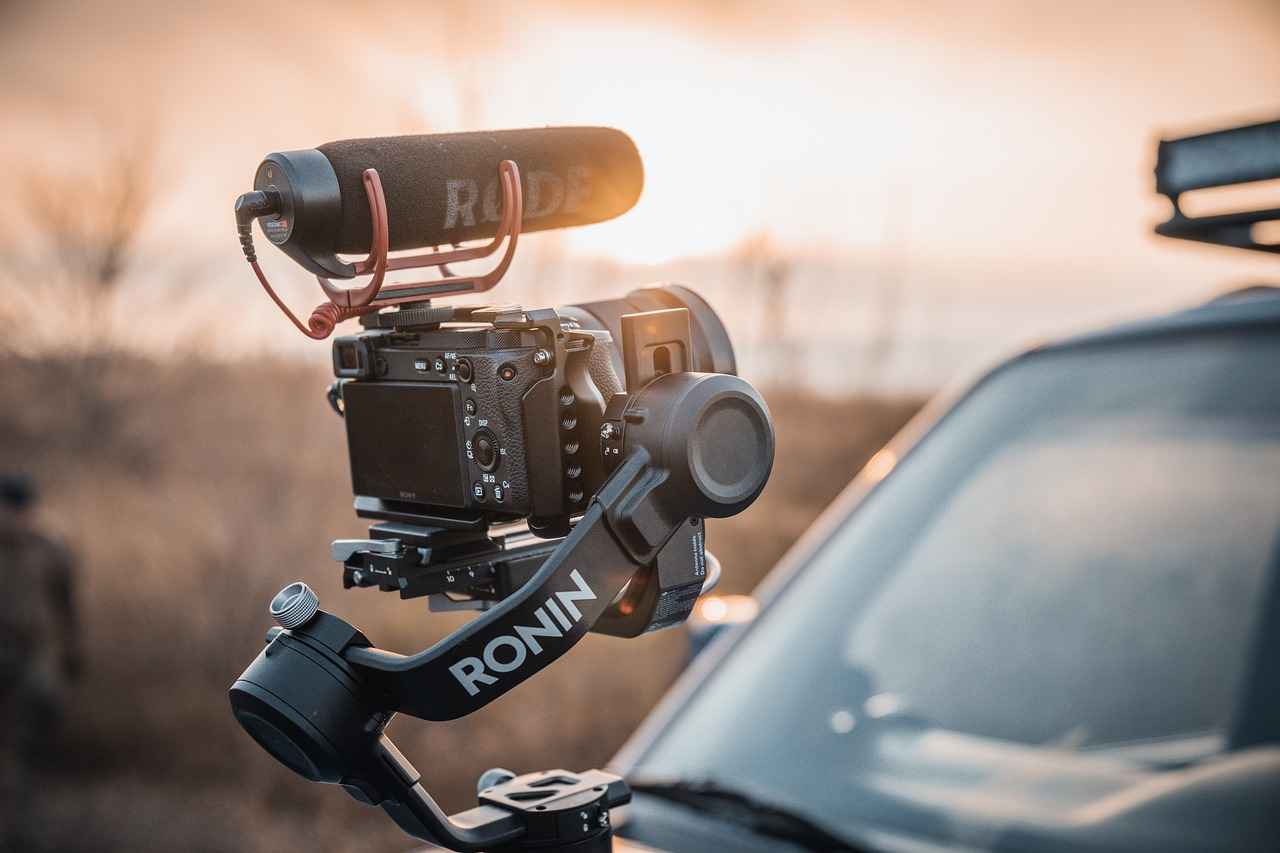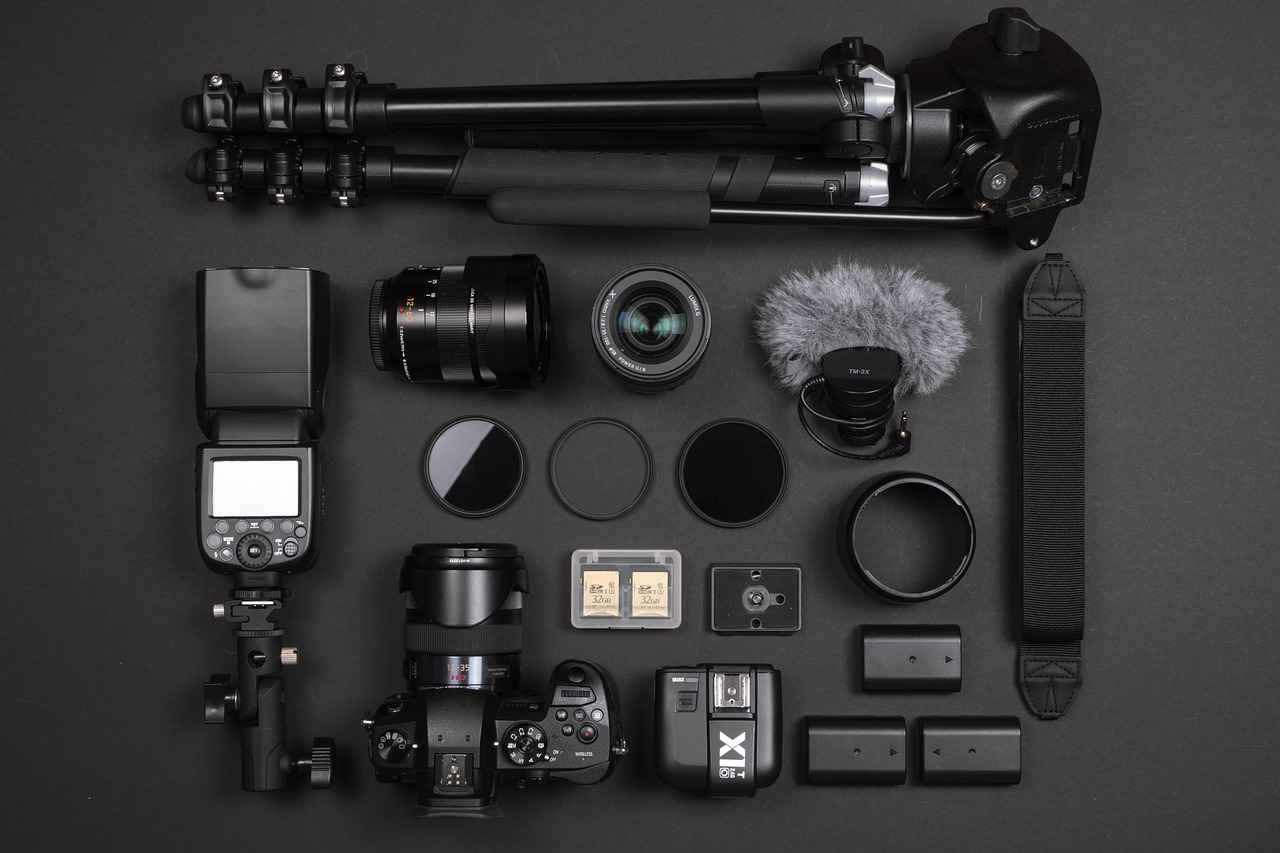The action camera industry has been a dynamic sector, characterized by rapid technological advancements and shifting consumer preferences. However, in recent years, several major brands have made the strategic decision to exit this market. This article delves into the multifaceted reasons behind these exits, examining industry trends, consumer behavior, and technological changes that shape these decisions.
To understand why major brands are leaving the action camera market, it is essential to recognize the prevailing trends. One significant trend is the increasing popularity of smartphones, which now offer competitive camera features that appeal to the average consumer. As smartphones become more advanced, they are often seen as a more versatile option compared to dedicated action cameras.
Smartphone technology has revolutionized photography and videography. With features such as high-resolution cameras, advanced editing options, and seamless sharing capabilities, many consumers are opting for smartphones over action cameras. This shift has led to a decline in demand for standalone action cameras, prompting brands to reconsider their market strategies.
Indeed, consumer preferences are evolving. Users increasingly favor devices that offer multiple functionalities. As a result, the traditional appeal of action cameras—primarily designed for adventure and extreme sports—is waning. This trend raises concerns about the sustainability of action camera brands in a market that is becoming increasingly saturated.
Social media has transformed content creation, with platforms like Instagram and TikTok prioritizing easily accessible and shareable content. As smartphones dominate this space, the necessity for action cameras is diminishing. Brands must adapt their strategies to align with the changing landscape of content consumption, which heavily favors mobile devices.
The financial implications of exiting the action camera market can be profound. Brands face the challenge of weighing production costs against declining sales. By redirecting resources to more profitable sectors, companies can enhance their overall financial health and focus on emerging technologies that promise better returns.
New entrants in the action camera market are introducing innovative features at competitive prices, intensifying the competition for established brands. This influx of options puts additional pressure on legacy brands, leading them to reassess their positions and, in some cases, exit the market altogether.
Technological advancements, such as 4K video capabilities and enhanced stabilization features, have raised consumer expectations significantly. Brands that fail to keep pace with these innovations risk losing market share, compelling some to withdraw from the action camera arena.
In response to declining sales in the action camera sector, many brands are pivoting to other markets. This strategic shift allows them to focus on product lines that are more aligned with current consumer interests and technological trends, ensuring long-term sustainability.
Action camera manufacturers encounter numerous challenges, including fierce competition and high production costs. The necessity for continuous innovation to meet consumer demands further complicates their ability to maintain profitability in a rapidly changing market.
Brand loyalty and reputation significantly influence the decision to exit the action camera market. Companies must carefully consider how leaving this sector impacts their overall brand image and customer trust, as a negative perception could affect their success in other markets.
Analyzing the experiences of brands that have exited the action camera market can yield valuable insights into market dynamics and consumer behavior. Understanding these factors can inform future business strategies and help other brands navigate similar challenges.
The future of the action camera industry remains uncertain. As technology and consumer preferences continue to evolve, brands must remain agile and adaptable to avoid further exits from this competitive market. The survival of action camera brands may depend on their ability to innovate and align with the changing landscape of consumer technology.

What Are the Current Trends in the Action Camera Market?
In today’s rapidly evolving technological landscape, understanding the current trends in the action camera market is crucial for grasping the reasons behind the exit of major brands. The action camera segment, once dominated by a few key players, is experiencing significant shifts influenced by various factors. This article delves into these trends, highlighting the changing consumer preferences and the impact of smartphone cameras on the market.
The action camera market has undergone a transformation in recent years, driven by evolving consumer preferences and advancements in technology. One of the most prominent trends is the growing inclination of consumers toward multifunctional devices. As smartphones continue to improve their camera capabilities, many consumers find themselves less inclined to invest in dedicated action cameras.
- Smartphone Dominance: The rise of smartphones equipped with high-resolution cameras has significantly impacted the action camera market. With features such as 4K video recording, advanced stabilization, and various editing apps, smartphones offer convenience that traditional action cameras struggle to match.
- Consumer Preference for Versatility: Today’s consumers prefer devices that serve multiple purposes. The ability to capture high-quality images, record videos, and instantly share content on social media platforms makes smartphones more appealing than standalone action cameras.
- Social Media Influence: The explosion of social media platforms has changed the way content is created and consumed. Users often prioritize convenience and immediacy, opting for smartphones that allow them to capture and share moments in real-time.
Moreover, the action camera market is witnessing a shift towards compact and portable designs. Consumers are increasingly looking for lightweight options that can be easily carried during outdoor adventures. This trend has led to the introduction of innovative designs that prioritize portability without compromising on performance.
Another significant trend is the rise of new entrants in the action camera space. These newcomers often provide competitive pricing and unique features that challenge established brands. As a result, traditional players are forced to reevaluate their strategies, leading some to exit the market altogether.
Smartphone technology has dramatically reshaped the action camera landscape. With manufacturers continually enhancing camera specifications, the gap between smartphones and dedicated action cameras has narrowed. Features such as optical image stabilization and AI-driven enhancements have made smartphones a formidable competitor in the action camera segment.
Additionally, the integration of advanced software capabilities allows smartphone users to edit and share their content seamlessly. This convenience is a significant factor contributing to the declining sales of traditional action cameras.
As consumer preferences evolve, many users are gravitating towards devices that offer a blend of functionality and ease of use. The demand for action cameras is waning as consumers prioritize the all-in-one capabilities of smartphones. This trend raises important questions about the future viability of standalone action cameras in an increasingly saturated market.
In summary, the action camera market is at a crossroads, influenced by technological advancements and shifting consumer preferences. Understanding these trends is essential for industry stakeholders as they navigate the challenges and opportunities that lie ahead.

How Has Smartphone Technology Impacted Action Cameras?
Smartphone technology has revolutionized various sectors, and the action camera market is no exception. As smartphones continue to evolve, their camera capabilities have improved dramatically, leading many consumers to question the need for dedicated action cameras. This article delves into how smartphone advancements have influenced consumer choices and the action camera industry.
One of the primary reasons consumers are opting for smartphones instead of action cameras is their versatility. Modern smartphones come equipped with high-resolution cameras, advanced stabilization features, and a plethora of editing apps that allow users to capture and share content effortlessly. In contrast, traditional action cameras, while specialized, often lack the multifunctionality that smartphones provide.
- High-Quality Imaging: Many smartphones now feature cameras that can shoot in 4K resolution, rivaling that of dedicated action cameras.
- Portability: Smartphones are lightweight and compact, making them easier to carry on adventures compared to bulkier action cameras.
- Instant Sharing: With built-in social media integration, users can share their experiences instantly, a feature that action cameras struggle to match.
Social media platforms like Instagram and TikTok have drastically altered content creation. Users now prefer capturing spontaneous moments with their smartphones, as these devices offer immediate access to editing tools and sharing options. The need for specialized action cameras has diminished, as smartphones can fulfill these requirements.
As smartphone technology advances, the appeal of action cameras is waning. Many consumers find it challenging to justify the expense of a dedicated action camera when their smartphones can accomplish similar tasks. Moreover, the marketing strategies of major brands have shifted towards promoting smartphones as all-in-one devices, further diminishing the action camera’s market presence.
As sales decline, action camera brands face significant financial challenges. The cost of production and marketing for specialized devices may not be sustainable in a market dominated by multifunctional smartphones. Brands must evaluate the return on investment and consider reallocating resources to more profitable sectors.
While some brands are exiting the action camera market, others are attempting to innovate. New entrants are introducing features like 360-degree video and enhanced waterproofing, but these innovations may not be enough to compete with the rapid advancements in smartphone technology.
The future of the action camera industry is uncertain. To survive, brands must adapt to changing consumer preferences and technological advancements. This may involve creating hybrid devices that combine the features of smartphones and action cameras, or pivoting to entirely new markets where they can leverage their expertise.
In conclusion, the impact of smartphone technology on the action camera market is profound. As consumers increasingly favor the convenience and versatility of smartphones, action camera brands must reassess their strategies to remain relevant in this competitive landscape.

Are Consumer Preferences Shifting Away from Action Cameras?
As the technology landscape evolves, consumer preferences are shifting dramatically. In recent years, there has been a noticeable trend towards multifunctional devices that cater to a variety of needs. This shift raises critical questions about the future viability of standalone action cameras in an increasingly saturated market.
Today’s consumers are increasingly drawn to devices that offer a range of functionalities. Smartphones, for instance, are equipped with high-quality cameras that can capture stunning photos and videos. Many users find that their smartphones suffice for their adventurous activities, effectively replacing the need for specialized action cameras. This trend is not merely a passing phase; it’s a reflection of a broader shift in how people engage with technology and media.
While action cameras were once the go-to choice for thrill-seekers and content creators, their relevance is being challenged. The rise of social media platforms has changed how content is shared and consumed. Users often prefer the convenience of using their smartphones to capture and edit content on the go. This has led many to question whether standalone action cameras can maintain their market share in the face of such competition.
Technological advancements have played a significant role in shaping consumer preferences. Innovations such as 4K video and advanced stabilization features have set high expectations for action cameras. However, these advancements are not exclusive to action cameras; smartphone manufacturers have also incorporated similar features, further blurring the lines between the two categories. As a result, consumers are less inclined to invest in a separate device when their smartphones can deliver comparable performance.
Social media platforms like Instagram and TikTok have transformed the landscape of content creation. Users now prioritize ease of sharing and editing, which smartphones excel at. The demand for quick, high-quality content has shifted focus away from traditional action cameras, which often require additional steps for editing and sharing. This change in behavior is a crucial factor influencing consumer preferences.
From an economic standpoint, the decision to invest in an action camera is becoming increasingly scrutinized. Consumers are weighing the cost of standalone devices against the multifunctionality offered by smartphones. This economic perspective is vital for understanding the declining sales figures in the action camera market. Brands must navigate these economic realities carefully to remain competitive.
In light of shifting consumer preferences, many brands are reevaluating their strategies. Some companies are pivoting towards developing more versatile products that can serve multiple purposes. This strategic shift is essential for survival in a market that is rapidly evolving. Brands must focus on innovation and adaptability to meet the changing demands of consumers.
The future of the action camera industry is uncertain. As consumer preferences continue to evolve, brands must either innovate or risk being left behind. The challenge lies in finding a unique value proposition that distinguishes action cameras from the multifunctional capabilities of smartphones. Only time will tell how this dynamic will unfold.
In conclusion, the action camera market faces significant challenges as consumer preferences shift towards multifunctional devices. Brands must adapt to these changes to remain relevant in a competitive landscape.

What Role Do Social Media Platforms Play?
In today’s digital landscape, social media platforms have become pivotal in shaping how content is created, shared, and consumed. These platforms have revolutionized the way brands engage with their audiences, creating a new paradigm for marketing strategies. The emergence of social media has particularly impacted the action camera industry, which traditionally relied on dedicated devices for capturing high-quality adventure and travel content.
Historically, action cameras were essential tools for outdoor enthusiasts and content creators. They provided high-definition video capabilities and rugged designs that catered to extreme sports and travel experiences. However, with the rise of smartphones equipped with advanced camera technology, the reliance on action cameras has diminished. This shift is primarily driven by several factors:
- Convenience: Smartphones are now the go-to devices for capturing spontaneous moments. Users appreciate the ability to take high-quality photos and videos without the need to carry multiple devices.
- Social Media Integration: Platforms like Instagram, TikTok, and YouTube have made it easier for users to share content directly from their smartphones. This seamless integration encourages users to opt for their phones over dedicated cameras.
- Editing and Sharing Features: Many smartphones come equipped with built-in editing tools and apps that allow users to enhance their content before posting. This functionality appeals to users looking for quick and efficient ways to share their experiences.
The impact of social media on consumer behavior cannot be overstated. As users increasingly seek instant gratification and immediate sharing capabilities, the demand for action cameras has waned. Brands that once thrived on the popularity of these devices now find themselves re-evaluating their marketing strategies. They must consider how to adapt to a market that is shifting towards multifunctional devices.
Moreover, the rise of influencer culture has changed the landscape of content creation. Influencers often rely on smartphones to capture and share their experiences with followers. This trend has led to a perception that action cameras are no longer necessary for producing high-quality content. As a result, brands are faced with the challenge of redefining their value propositions to remain relevant in a crowded market.
In response to these changes, some brands have pivoted their focus towards developing accessories and software that enhance smartphone photography, rather than competing directly in the action camera space. This strategic shift allows them to leverage existing consumer trends while maintaining brand relevance.
As social media continues to evolve, the role of action cameras will likely diminish further unless brands can innovate and find new ways to engage with consumers. The challenge lies in understanding how to create compelling content that resonates with audiences while adapting to the tools they prefer to use.
In conclusion, the influence of social media platforms on the action camera industry is profound. As consumer preferences shift towards smartphones for their convenience and integration with social media, brands must adapt to these changes. By understanding the evolving landscape and consumer behavior, brands can strategize effectively to navigate the challenges posed by this dynamic environment.

What Are the Financial Implications for Brands Exiting the Market?
The decision for brands to exit the action camera market is not merely a tactical maneuver; it involves a complex evaluation of financial implications that can significantly impact their overall business strategy. As companies reassess their positions in a rapidly changing landscape, understanding the monetary factors at play becomes essential.
One of the primary considerations is the cost of production. Action cameras require substantial investment in research and development, manufacturing, and marketing. As sales begin to decline, these costs can quickly outweigh potential profits. Brands must analyze whether the resources allocated to action camera production could yield better returns if redirected to more profitable ventures.
Additionally, brands must consider the declining sales trend in the action camera sector. With the rise of multifunctional devices like smartphones, many consumers are opting for devices that offer a range of features beyond just high-quality video recording. This shift in consumer behavior means that brands face a shrinking market, leading to lower sales volumes and, consequently, reduced revenue.
Furthermore, the potential for profitability in other sectors cannot be overlooked. Companies are increasingly recognizing the value of pivoting to markets with higher demand and better growth prospects. For instance, brands may find opportunities in emerging technologies such as drones or advanced smartphone accessories, which could provide a more lucrative return on investment compared to action cameras.
Another critical aspect is the impact on brand reputation. Exiting a market can have mixed effects on a brand’s image. On one hand, it may signal to consumers that the company is responsive to market demands; on the other hand, it could lead to perceptions of instability or lack of commitment. Brands must carefully manage their messaging to maintain customer trust and loyalty.
Moreover, there are financial risks associated with exiting the action camera market. Companies may face sunk costs related to unsold inventory, marketing expenses, and the potential loss of market share. These factors can strain financial resources and impact overall profitability. Brands must conduct a thorough risk assessment to ensure that the benefits of exiting outweigh these potential pitfalls.
In addition to these considerations, brands should also evaluate the long-term sustainability of their business model. As technology continues to evolve, companies need to be agile and adaptable. This may mean investing in innovative solutions that align with consumer trends rather than sticking to traditional action camera offerings.
Ultimately, the decision to exit the action camera market is multifaceted, involving a careful balance of financial considerations, market dynamics, and brand strategy. Companies must remain vigilant and proactive, continuously assessing their position to ensure they can thrive in an ever-changing landscape.
In conclusion, the financial implications of exiting the action camera market are significant and complex. Brands must weigh the costs of production against declining sales and potential profitability in other sectors. By making informed decisions based on thorough analysis, companies can better navigate the challenges of this competitive industry.

How Are New Entrants Changing the Landscape?
The action camera market is undergoing a significant transformation, primarily driven by the entry of new competitors who are reshaping the landscape with their innovative offerings and aggressive pricing strategies. This influx of new entrants is not only altering consumer choices but also placing considerable pressure on established brands that have dominated the industry for years.
New players in the action camera market are introducing cutting-edge features that appeal to tech-savvy consumers. These features often include:
- Enhanced Video Quality: Many new cameras now support 4K and even 8K video, catering to the growing demand for high-definition content.
- Advanced Stabilization: Technologies like gimbal-like stabilization provide smoother footage, making these cameras ideal for action-packed scenarios.
- Modular Designs: Some brands are offering modular systems that allow users to customize their cameras with various accessories, enhancing functionality.
With new entrants offering competitive pricing, established brands are feeling the heat. Many consumers are drawn to these affordable options, which often deliver similar quality and features. This shift in pricing dynamics has forced established brands to reconsider their pricing strategies, often leading to:
- Price Reductions: To remain competitive, many established brands are slashing prices, which can impact their profit margins.
- Increased Marketing Efforts: Brands are investing more in marketing to highlight their unique selling points and justify their higher prices.
Interestingly, many new entrants are focusing on niche markets that established brands may have overlooked. For example, some companies are creating action cameras specifically designed for extreme sports enthusiasts, while others cater to casual users looking for easy-to-use devices. This targeted approach allows new brands to carve out specific segments within the market, further complicating the landscape for established players.
New entrants are also leveraging user feedback more effectively than their established counterparts. By actively engaging with their customers through social media and online forums, these brands can quickly identify trends and preferences, allowing them to adapt their products accordingly. This responsiveness not only helps in developing better products but also fosters a sense of community among users, enhancing brand loyalty.
In response to the challenges posed by new entrants, established brands are adopting various strategies:
- Innovation: Many brands are investing heavily in research and development to introduce new features and improve existing products.
- Diversification: Some companies are expanding their product lines to include smartphones and other gadgets, aiming to capture a broader market.
The influx of new entrants into the action camera market is ultimately beneficial for consumers. With increased competition, buyers can expect:
- Better Value: More options and competitive pricing lead to better deals for consumers.
- Enhanced Features: As brands strive to outdo each other, consumers benefit from continual improvements in technology and functionality.
In summary, the emergence of new entrants in the action camera market is reshaping the industry landscape. Their innovative features, competitive pricing, and responsiveness to consumer needs are compelling established brands to rethink their strategies. As this dynamic continues to evolve, it will be fascinating to see how the market adapts and what new innovations will emerge.

What Technological Advancements Are Influencing the Market?
In recent years, the action camera industry has witnessed rapid changes driven by technological advancements. These innovations not only enhance the user experience but also set higher benchmarks for manufacturers. As consumer expectations evolve, brands find themselves at a crossroads: innovate or risk falling behind. This article delves into the key technological advancements influencing the action camera market and their implications for both consumers and manufacturers.
- 4K Video Resolution: The move towards 4K video has revolutionized content creation. With four times the resolution of 1080p, 4K allows users to capture stunning detail, making action cameras more appealing for professional use and social media sharing.
- Advanced Stabilization Features: Technologies like Electronic Image Stabilization (EIS) and gimbal systems have made it possible to shoot smooth, shake-free footage even in the most challenging conditions. This feature is particularly important for users engaged in extreme sports.
- Compact and Lightweight Designs: Modern action cameras are designed to be smaller and lighter, making them easier to carry and use. This portability is a significant factor for adventurers and travelers who need equipment that won’t weigh them down.
With the introduction of these technologies, consumer expectations have soared. Users now demand not only high-quality video but also a range of features that enhance usability. For example, the integration of Wi-Fi and Bluetooth connectivity allows for seamless sharing and remote control, further boosting the appeal of action cameras.
As consumer demands grow, brands face immense pressure to keep pace with technological advancements. Many established companies struggle to innovate quickly enough, leading to a potential loss of market share. If brands cannot deliver cutting-edge features, they may find themselves phased out of the market.
In addition to hardware improvements, user-friendly interfaces have become essential. Consumers expect intuitive controls and easy navigation, especially when using devices in high-pressure environments. Brands that prioritize user experience are more likely to retain customer loyalty and attract new users.
New entrants in the action camera market are capitalizing on these technological trends by offering innovative features at competitive prices. This influx of fresh ideas and affordable options challenges established brands to rethink their strategies and adapt to the evolving landscape.
Looking ahead, the action camera industry is likely to see further advancements in areas such as artificial intelligence and augmented reality. These technologies could enhance user experience by providing automated editing features or immersive content creation tools, thus reshaping how users interact with their cameras.
In conclusion, the action camera market is currently undergoing a significant transformation driven by technological advancements. Brands that fail to innovate risk losing their competitive edge, while those that embrace change can thrive in this dynamic environment. As consumer preferences continue to evolve, the focus on cutting-edge technology will remain a key factor in determining the success of action camera manufacturers.

Why Are Some Brands Pivoting to Other Markets?
In recent years, the action camera market has witnessed a significant transformation, prompting many major brands to reconsider their strategies. Brands are pivoting to other markets as a response to the decline in action camera sales. This shift not only allows them to focus on more profitable product lines but also enables them to explore emerging technologies that cater to evolving consumer needs.
One of the primary factors influencing this strategic pivot is the declining consumer interest in dedicated action cameras. With the rapid advancement of smartphone technology, many users now prefer the convenience and multifunctionality of their devices. Modern smartphones are equipped with high-quality cameras that offer features such as 4K video recording, advanced image stabilization, and various photography modes, making them a more attractive option for casual users.
As consumer preferences shift towards multifunctional devices, the demand for standalone action cameras has decreased. Many consumers find that their smartphones can meet their needs for capturing high-quality images and videos during adventures. This trend has led to a significant decline in sales for traditional action camera brands, forcing them to reassess their product offerings.
Social media platforms have revolutionized content creation and consumption. In the past, action cameras were essential for adventure enthusiasts looking to document their experiences. However, with the rise of social media influencers and the integration of high-quality cameras within smartphones, the landscape has changed dramatically. Brands are now recognizing that they need to adapt their strategies to stay relevant in a market dominated by social media-driven content.
The financial implications of maintaining a presence in the declining action camera market are significant. Brands must weigh the costs of production and marketing against the backdrop of falling sales. Many companies are finding that reallocating resources to more profitable sectors, such as drones or smart home technology, provides better returns on investment.
New entrants in the action camera market are introducing innovative features and competitive pricing, further intensifying competition. This influx of new products puts pressure on established brands, compelling them to either innovate or exit the market. As a result, many brands are choosing to pivot to other markets where they can leverage their expertise and brand equity more effectively.
Technological advancements play a crucial role in shaping brand strategies. Features such as 4K video capabilities, enhanced stabilization, and compact designs have raised consumer expectations. Brands that fail to keep pace with these advancements risk losing market share to competitors who can offer superior products. Consequently, many companies are choosing to invest in research and development in other areas, allowing them to stay ahead of the curve.
Brand loyalty and reputation are critical factors in a company’s decision to exit the action camera market. Companies must consider the potential impact on their overall brand image and customer trust. A strategic exit, if managed properly, can preserve brand equity and allow for a smoother transition into new markets.
Analyzing the experiences of brands that have exited the action camera market can provide valuable insights into market dynamics and consumer behavior. Understanding the reasons behind these decisions can inform future business strategies, helping companies navigate the challenges of a rapidly changing landscape.
In summary, the pivot of major brands from the action camera market is driven by a combination of declining sales, shifting consumer preferences, and the need to adapt to technological advancements. As the industry continues to evolve, brands must remain agile and responsive to market demands to ensure their long-term success.

What Are the Challenges Facing Action Camera Manufacturers?
Action camera manufacturers are currently navigating a complex landscape filled with numerous challenges. These challenges stem from various factors, including intense competition, escalating production costs, and the necessity for continuous innovation to satisfy evolving consumer demands. Understanding these challenges is crucial for grasping the dynamics of the action camera market.
The action camera market is characterized by fierce competition among various brands. Established companies face pressure not only from their traditional rivals but also from new entrants who offer innovative features at competitive prices. This competitive landscape forces manufacturers to differentiate their products continually, making it challenging to maintain market share.
Manufacturers are also grappling with high production costs, which have been exacerbated by global supply chain disruptions. The rising costs of raw materials and components have made it increasingly difficult for brands to produce affordable yet high-quality action cameras. As a result, many manufacturers are forced to reassess their pricing strategies, which can further impact their competitiveness.
In an industry where technological advancements occur rapidly, the need for continuous innovation is paramount. Consumers now expect features such as 4K video, advanced stabilization, and improved battery life. Brands that fail to keep pace with these expectations risk losing customers to competitors who can offer more advanced technology. This constant pressure to innovate can strain resources and divert attention from other essential aspects of the business.
Another challenge facing action camera manufacturers is the shifting landscape of consumer preferences. Many consumers are now opting for smartphone cameras, which have significantly improved in quality and versatility. As a result, standalone action cameras are often viewed as less necessary, leading to a decline in sales. This shift necessitates a reevaluation of marketing strategies and product offerings to align with consumer expectations.
The action camera market is becoming increasingly saturated, making it difficult for brands to achieve significant growth. With numerous options available, consumers are often overwhelmed, leading to declining sales for many manufacturers. This saturation not only affects new entrants but also challenges established brands to find new ways to engage their customer base.
Social media platforms have transformed how users create and share content. While action cameras were once essential for capturing high-quality adventure footage, many consumers now rely on their smartphones for this purpose. This shift in content creation dynamics has forced action camera brands to rethink their marketing strategies and product features to remain relevant in a rapidly changing environment.
In summary, action camera manufacturers are facing a multitude of challenges that threaten their sustainability in the market. From intense competition and high production costs to the need for continuous innovation, brands must adapt to survive. Understanding these challenges is vital for stakeholders looking to navigate the complexities of the action camera industry.

How Do Brand Loyalty and Reputation Influence Exits?
Brand loyalty and reputation are critical components in the decision-making process for companies considering an exit from the action camera market. As brands navigate this challenging landscape, they must carefully assess how their departure will impact their overall image and the trust they have built with their customers.
In today’s competitive environment, a strong brand reputation is invaluable. Companies that have invested years in cultivating a loyal customer base face the dilemma of whether leaving the action camera market will tarnish their hard-earned reputation. For instance, brands known for their high-quality products may risk alienating their customers if they abruptly exit, leading to potential brand erosion.
Consumer trust is another vital factor. Many consumers have a deep emotional connection to brands that have consistently delivered quality and innovation. When a brand exits a market, it can create feelings of uncertainty among its customer base. Consumers may question the brand’s commitment to quality and innovation in other product lines, leading to a ripple effect that can damage trust across the entire brand portfolio.
Moreover, the action camera market is not just about the products; it’s about the community and lifestyle that surround them. Brands that have successfully engaged with their audience through social media and community events have built a loyal following. Exiting the market can disrupt these relationships, causing customers to feel abandoned and leading to a decline in brand loyalty.
To illustrate this point, consider the case of a well-known action camera brand that decided to pivot to other technology sectors. While the transition was financially motivated, the backlash from loyal customers was swift. Many felt that the brand had neglected its roots and the community that had supported it for years. This situation highlights the delicate balance brands must maintain between business decisions and customer sentiment.
Additionally, companies must evaluate the potential for rebranding or repositioning. If a brand decides to exit the action camera market, it may need to invest in new marketing strategies to reassure consumers about its commitment to quality in other areas. This can be a costly endeavor, and if not executed properly, it may further alienate existing customers.
Furthermore, the rise of social media influencers and content creators has changed the landscape of consumer expectations. Many action camera users rely on social media for product recommendations and reviews. A brand’s exit from the market can lead to negative commentary online, which can amplify the perception of a brand’s decline in quality or relevance.
In conclusion, brand loyalty and reputation are pivotal when companies contemplate exiting the action camera market. The potential fallout from such decisions can have lasting effects on customer trust and overall brand perception. As the market continues to evolve, brands must navigate these challenges carefully, ensuring that they maintain their reputation while making strategic business decisions.

What Insights Can Be Gained from Brands That Have Exited?
Understanding the dynamics of the action camera market is crucial for brands and consumers alike. As some major brands have exited this competitive space, analyzing their experiences can yield valuable insights into market trends, consumer preferences, and strategic decision-making. This article delves into the lessons learned from brands that have chosen to step away from the action camera industry.
Several factors have driven brands to exit the action camera market. Declining sales due to the rise of smartphones with advanced camera capabilities has significantly impacted demand. Additionally, the saturation of the market with numerous competitors has made it increasingly challenging for established brands to maintain their market share.
Consumer behavior is constantly evolving, and in the case of action cameras, many users have shifted towards multifunctional devices. Smartphones not only provide high-quality images but also offer a range of applications that enhance the user experience, making dedicated action cameras less appealing. This shift highlights the importance of adapting to consumer needs and preferences.
Innovation is key in the tech industry, and brands that failed to keep pace with technological advancements found themselves at a disadvantage. The introduction of features such as 4K video, improved stabilization, and enhanced connectivity options raised consumer expectations. Brands that could not innovate effectively often faced declining interest in their products.
- Market Research: Conducting thorough market research can help brands understand consumer needs and preferences, allowing them to adapt their offerings accordingly.
- Diversification: Brands that diversified their product lines were better positioned to withstand market fluctuations. Exploring new technologies and markets can provide alternative revenue streams.
- Brand Positioning: Understanding how to position a brand in a crowded marketplace is essential. Companies must communicate their unique value propositions clearly to stand out.
Emerging brands entering the action camera market can learn from the experiences of those that have exited. Identifying gaps in the market and addressing unmet consumer needs can create opportunities for success. Moreover, leveraging social media and influencer partnerships can enhance brand visibility and engagement.
Adaptation is critical in the fast-paced tech landscape. Brands must be willing to pivot their strategies and embrace new trends to remain relevant. The experiences of exiting brands serve as a cautionary tale about the risks of stagnation and the need for continuous improvement.
Exiting the action camera market can have significant financial implications for brands. The costs associated with production, marketing, and distribution can be substantial, and brands must weigh these against the potential for profitability in other sectors. Careful financial analysis is essential for making informed decisions.
The departure of major brands from the action camera market indicates a shift in consumer preferences and technological advancements. While some brands may find success in other markets, the future of standalone action cameras remains uncertain. Continuous innovation and a deep understanding of consumer behavior will be vital for brands that choose to remain in this space.
In summary, analyzing the experiences of brands that have exited the action camera market provides valuable insights into market dynamics and consumer behavior. By learning from these exits, current and emerging brands can develop strategies that align with evolving consumer needs, ensuring their long-term success in a competitive landscape.

What Does the Future Hold for the Action Camera Industry?
The action camera industry has long been a staple for adventure enthusiasts and content creators alike. However, as we look towards the future, it becomes increasingly clear that the landscape is shifting. The future of the action camera industry remains uncertain. As technology and consumer preferences continue to evolve, brands must adapt or risk further exits from this competitive market.
Several factors are contributing to the changing dynamics of the action camera market. Technological advancements are at the forefront, with innovations in smartphone cameras challenging the need for dedicated devices. Additionally, the rise of social media platforms has altered how content is produced and shared, prompting a reevaluation of the role action cameras play in this ecosystem.
Modern consumers are increasingly favoring multifunctional devices over specialized tools. With smartphones now equipped with high-quality cameras, many users find it more convenient to rely on their phones for capturing moments rather than investing in an action camera. This shift in preference raises critical questions about the future viability of standalone action cameras.
Social media platforms have transformed content creation. Action cameras were once essential for capturing high-quality adventure footage, but now, the versatility of smartphones allows users to shoot, edit, and share content seamlessly. This change has led brands to rethink their marketing strategies and product offerings.
As brands evaluate their positions in the action camera market, the financial implications of exiting become significant. Companies must balance production costs against declining sales and consider the potential profitability of diversifying into other sectors. This strategic pivot is becoming increasingly common among established brands.
The influx of new entrants into the action camera industry is reshaping the competitive landscape. These companies often introduce innovative features at competitive prices, putting pressure on established brands to either innovate or withdraw. This competitive environment is forcing legacy brands to reassess their product lines and market strategies.
Technological advancements such as 4K video capabilities, enhanced stabilization features, and compact designs have raised consumer expectations. Brands are now compelled to continuously innovate to meet these demands, or they risk losing relevance in a market that is rapidly evolving.
In response to declining action camera sales, many brands are strategically pivoting to other markets. This shift allows them to focus on more profitable product lines and emerging technologies, ensuring their long-term sustainability and relevance in the tech landscape.
Action camera manufacturers are grappling with numerous challenges, including intense competition, high production costs, and the necessity for ongoing innovation. These challenges are compounded by the need to maintain brand loyalty and reputation while navigating a saturated market.
The decision to exit the action camera market is often influenced by brand loyalty and reputation. Companies must consider how their departure will impact overall brand image and customer trust, weighing the benefits of exiting against potential long-term brand damage.
Examining the experiences of brands that have exited the action camera market can offer valuable insights. These case studies reveal market dynamics and consumer behavior trends that can inform future business strategies for remaining players in the industry.
In summary, the action camera industry faces a period of uncertainty characterized by evolving technology and shifting consumer preferences. Brands must remain agile, adapting their strategies to meet these changes or risk further exits from this competitive market.
Frequently Asked Questions
- Why are major brands exiting the action camera market?
Many major brands are stepping back from the action camera industry due to shifting consumer preferences, the rise of multifunctional smartphones, and the challenges of keeping up with technological advancements.
- How have smartphones affected the demand for action cameras?
Smartphones have significantly improved their camera capabilities, making them a preferred choice for many consumers. This shift in preference has led to a decline in the demand for dedicated action cameras.
- What impact do social media platforms have on action camera sales?
Social media platforms have transformed content creation, with many users opting for the convenience of smartphones for their adventures. This trend has diminished the necessity for traditional action cameras.
- Are new entrants in the action camera market affecting established brands?
Absolutely! New entrants are bringing innovative features and competitive pricing, which puts pressure on established brands to either innovate or exit the market.
- What does the future hold for the action camera industry?
The future remains uncertain as brands must adapt to evolving technologies and consumer preferences or risk further exits from this increasingly competitive market.
